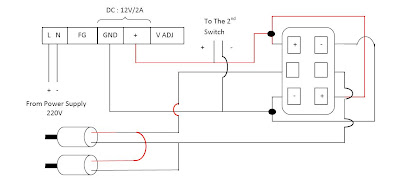HOW TO MAKE A ANALOG
ROBOT ?
We all love watching robot and playing with them. In films
Transformers, Terminator top in our list. This article will give you a
preliminary knowledge about how to make a robot by yourself . Building a robot
is not very troublesome if you stick to the basic of Analog. Problem arises
when it comes to wireless, matching the frequency and ability of the antenna to
transmit that is quite a tedious job, but here there is no need to care about that .
Lets come to the point , for a perfect functioning of a
analog robot , one need constant voltage supply. Variation of voltage or less
voltage will give low power to drive the gear motors. So the first thing you
need is a SMPS or Switch Mode Power Supply.
A SMPS is an electronic power supply that incorporates a
switching regulator in order to be highly efficient in conversion of electrical
power. Like other types of power supplies , an SMPS transfers power from a
source like electrical power grid to a load while converting voltage and
current characteristics. Ideally , a
SMPS dissipates no power ,in contrast
regular power supply regulates the output voltage by constant dissipating power
in pass transistor. This power conversion efficiency is a important characteristic
of SMPS.
Here I have used a SMPS of rating 12V/2A.
Other things that I need:-
1.
A Platform.
2.
4 Tires
3.
4 Gear Motors
4.
2 Switch having 6 terminals
5.
Wires
Platform:-
Tire:-
Gear Motor :-
Here I have used gear motor but we
can also use Servo Motor.
Switch
:-
Wires
:-
The main connection lies with the
SMPS. There are 5 slots in SMPS
1. Live
(L)
2. Neutral
(N)
3. FG
AC
4. DC:
12V/2A
(i)
GND
(ii)
+
5. V
ADJ








